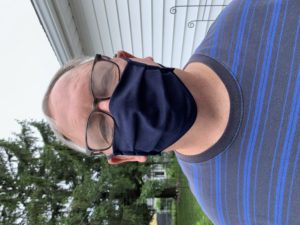
Until the spring of my senior year of high school, blue jeans were banned. I was warned by the school principal about wearing blue jeans at school during the first week of that year. In a brave act of civil disobedience, about once a week, I defied the ban by wearing a shirt, tie, and a pair of blue jeans. In early spring I led some of my fellow students to the football field, under the west end goal post, to protest to be allowed to wear jeans to school.
Times were changing, whether we protested or not, jeans were probably going to be allowed the following year, but we were seniors. Later that afternoon I was sent to the principal’s office. To my surprise, the principal had talked to the chairman of the school board and agreed to not enforce the ban on blue jeans, pending the formal policy change by the full school board. Protests sometimes work when the timing is right.
Resolving an issue requires getting the powers that be to focus on the issue. Protests tend to encourage them to focus on the issue. Once you’ve gotten their attention, sometimes the issue gets resolved.
The First Amendment to the United States of America Constitution grants Americans the right to assemble in support of a cause:
“Congress shall make no law respecting an establishment of religion, or prohibiting the free exercise thereof; or abridging the freedom of speech, or of the press; or the right of the people peaceably to assemble, and to petition the government for a redress of grievances.”
There were numerous anti-Vietnam war protests during my entire three years at the University of Minnesota, (1972 – 1974). Sometimes they were more intense than others. I was crossing the Northrup mall on the way to my Cognitive Psychology class. A tear gas canister exploded with a mild bang, spewing clouds of gas, about 20 feet from me. My eyes burned and itched. It was hard to breathe. The professor sent me to the campus clinic where they flushed my eyes. From then on, I had less sympathy for the heavy-handed police tactics used during a non-violent protest.
About nine or ten years later, I was the Industrial Relations Manager at White Farm Equipment Company in Hopkins, MN. As part of the bankruptcy proceedings, White Farm stopped the pension plans and turned them over to the Pension Benefit Guaranty Corporation. The net result is the pensioners got about 85% of their pensions. They were not happy.
Retirees protested with signs and news crews in front of my office. I felt bad for the pensioners but protesting does not retroactively increase farm equipment sales, thus preventing bankruptcy, which is basically what I said to the reporters with three microphones shoved in my face. Protesting can only affect future change, not the reality of the past.
Years later while working for Anoka County, there was a credible bomb threat from an anti-government protest group. My team spent two years electronically mapping the County. The data was backed-up but not off-site. So, I took about 10-15 minutes to gather the backup disks to carry them off-site. As I headed out the door of my office, two police officers very intensely questioned why I was still in the building and carrying two obviously heavy bags. Terrorist acts, even threats of terrorism, are not protected by the Constitution. When terrorism is threatened, being in the wrong place at the wrong time can be dangerous.
Several years after that, as I headed into work on my first day at MN/DOT, four protesters chained themselves to the doors. It looked like a bigger deal on the news than it did in person. I just walked through the set of doors next to the doors they were chained to. When I told my boss about the protesters, he told me to get used to it, lots of people protest about roads. I think the protesters saved a couple of trees. Sometimes the publicity resulting from the protest can make a difference.
I ended my career working for about 12 years at the Minnesota Pollution Control Agency (MPCA). Each and every one of those 12 years, there were several protests which made the evening news. The unofficial protocol was to walk behind the camera and be quiet if a person was being interviewed. Officially, we employees followed the same process in making determinations whether or not there were protesters. However, I suspect the protests were often effective in educating the public and gaining support for particular issues.
The Women’s Rights protests after Trump was elected were large and there were a large number of them. Clearly these protests moved the needle. Like many protests, at first, the exact desired outcome is both obvious and still not exactly clear. Yet over time, additional clarity is often achieved.
The racial justice protests ignited by the murder of George Floyd by the Minneapolis Police are the largest, most widespread, multi-generational, diverse, sustained I have seen in my lifetime. We are probably still too close to the moment to know what the outcome will be, however, clearly the role of the police in our society will be rapidly evolving. The intentional or unintentional enforcement of racism by social, governmental, and business systems is now in the spotlight and universally condemned.
The United States Constitution grants Americans the right to protest. Protests focus attention on an issue. Changing our ways requires focussing on the new way forward. Change is tough to achieve, yet, change can and does happen.
The closer you look, the more you see.